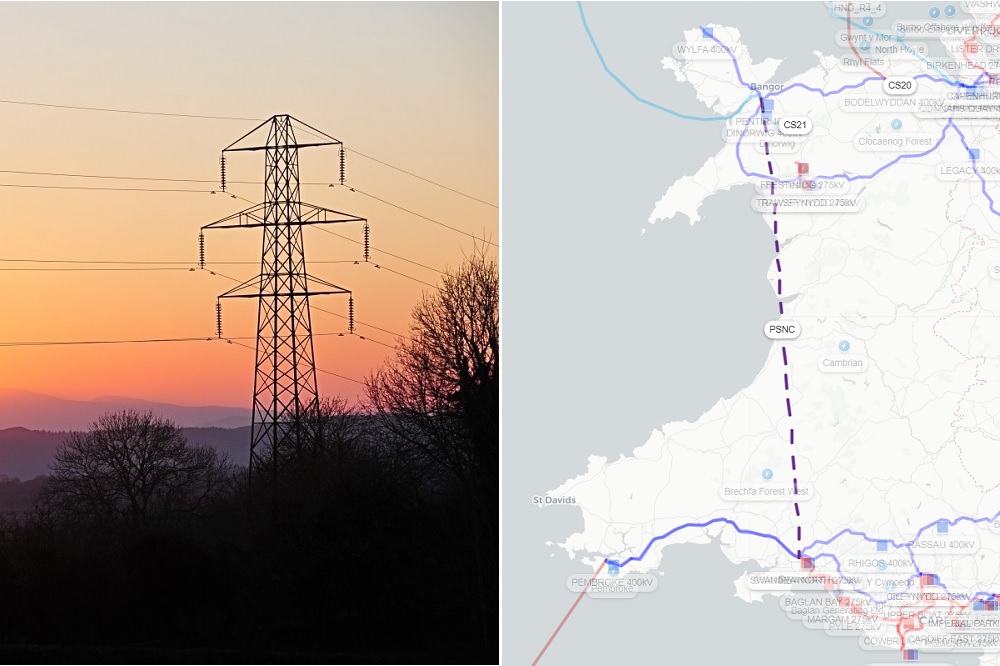National Grid plan could see 100 miles of power cables laid across Wales from Bangor to Swansea

100 miles of power lines could be built from Bangor in the north to Swansea in the south as part of a plan to upgrade Wales’ electricity network and take advantage of offshore power.
National Grid SEO’s documents identify “a new network need in Wales between North Wales and South Wales” to be “essential” and “options that need acceleration to a 2030 delivery date”.
According to the company, the plans are part of £50bn of investments across the UK’s electricity network and would be the biggest upgrade in 60 years.
Wales’ is an offshore wind power hotspot, with The Crown Estate announcing plans to generate an extra 4GW of electricity through floating winds farms off the coast of Wales earlier this month.
But plans to lay power cables from the north to the south of Wales are likely to prompt concerns about the visual impact on rural areas and communities.
National Grid ESO’s own interactive map shows the network passing through Eryri National Park in the north of Wales, and through Ceredigion and Carmarthenshire, two largely rural counties.
They have warned however that the map is “illustrative” and “highlights an identified need to transmit volumes of energy from point A to point B and does not represent specific cable routes”.
Full consultation
Similar plans have however already prompted protests in Lincolnshire, where a similar route is noted on the map to transport energy from the north to the south of England.
A Westminster Hall debate on plans for East Anglia is scheduled for later this month.
Lincolnshire Council have warned that “there is a need to connect electricity generated by offshore wind into our national grid, but I believe that other options are available to protect our east coast from giant industrialisation”.
“I could not support this application without all other options being explored first – for example, an offshore grid, or a single connection on the mainland,” Councillor Colin Davie, the executive councillor for strategic planning at the council, told Lincolnshire Live.
National Grid ESO has said that that more detailed designs will be prepared and that a full consultation on its plans will be carried out.
National Grid ESO is the electricity system operator for Great Britain. It became a legally separate part of National Grid in 2019, with the intention of becoming a independent state-owned body though parliament.
Support our Nation today
For the price of a cup of coffee a month you can help us create an independent, not-for-profit, national news service for the people of Wales, by the people of Wales.





Lots of lovely maps but no explanation of why a giant power cable travels all the way down from the Hebrides to a village in Snowdonia when Wales already exports one third of all electricity it produces to England.
Wales is a map, not a living place. Wales is a site of convenience, to serve others when they click their fingers. It is 2021, but not in Wales where it is still 1282.
NG prides itself on engineering subsea HVDC connections such as connecting the Wirral to Hunterston in Scotland, but when it cpmes to Wales, pylons are always the preferred solution. We had a long protest to prevent another line of pylons across Anglesey before Wylfa was cancelled. Despite a HVDC underground link across the Wirral they were not prepared to consider a similar solution on Anglesey!
End English control that only cares about southern England!
Unless Wales, like Scotland receives the benefit of Crown Estate income, WG should refuse planning consent. If Westminster disagree, then let this be the new Trywryn, a new line in the sand.
WG don’t give consent, Westminster do. Pylon lines are not devolved
I know, “Reserved Rights” Exactly the attitude they took in the 60s with Capel Celyn. But with the comparison with Scotland benefiting from Crown Estate income and Wales not, I don’t think it would play out the same as 1963. There would be a devil of a row that logic suggests Wales would win.
Overground transmission lines are NOT the answer. Whatever route is used for transmission lines, overground cables will still be extremely liable to weather damage..
Putting cables underground will be more expensive in the short term, but savings on unnecessary repairs will pay for that extra cost